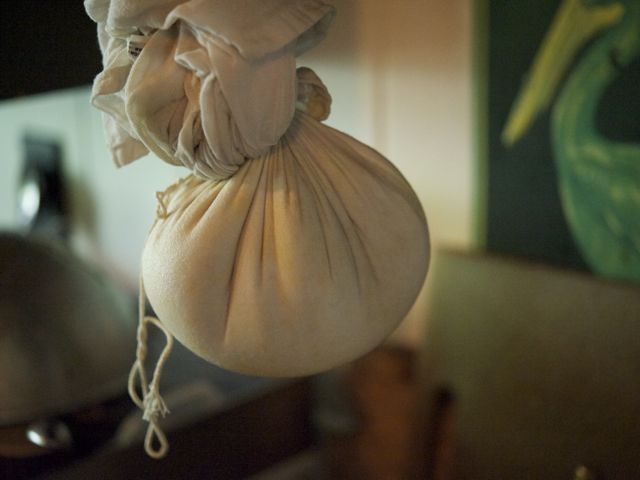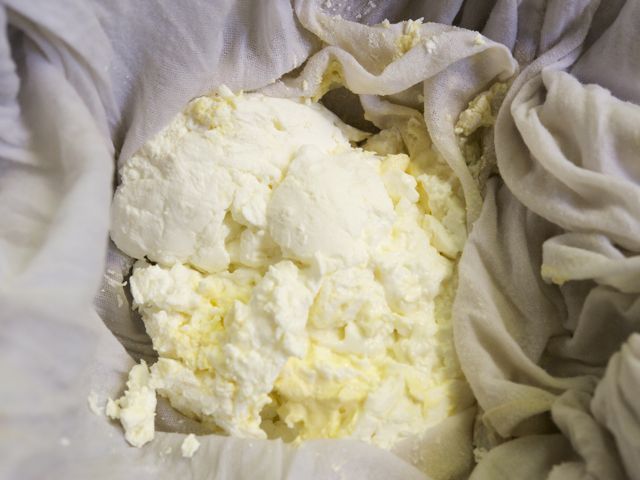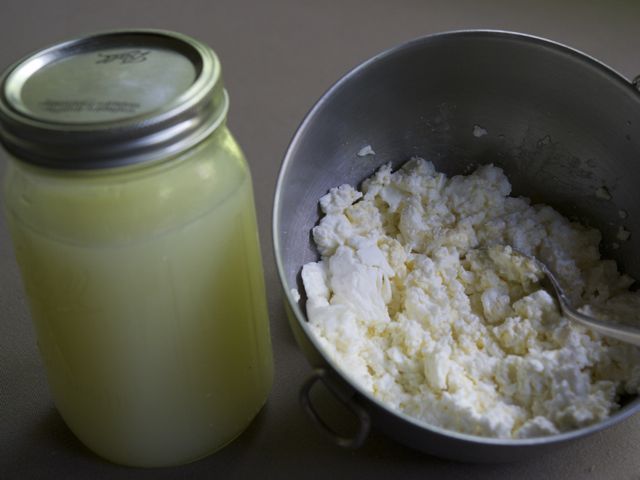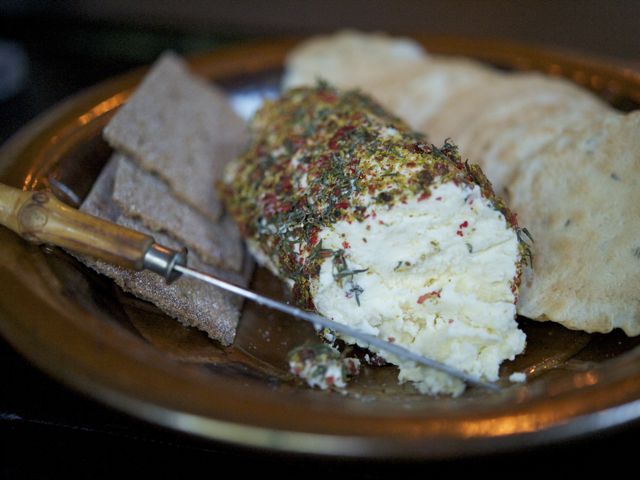7.19.11 Say Cheese
I think I've already mentioned Julia Moskin's D.I.Y Cooking Handbook for the
New York Times online right? It's where I got inspired to make
vin d'orange. (Which turned out great, incidentally.) She's got a bunch of useful recipes there, including a few that overlap with some of mine. Like one for making your own
ketchup; and
preserving lemons; and
this one for making your own fresh cream cheese. Hers is a slightly shorter process because she uses rennet, which causes your milk to curdle right away. I learned my technique from
Nourishing Traditions, where you simply let milk sit out on the counter for a few days until it curdles on its own. Actually, some
good bacteria helps it along. You separate the curds from the whey (reserving the latter for making
pickles and
sauerkraut, and stirring into soups and smoothies), then drain the curds so they come together in a light, creamy cheese. It's kind of magical.

my favorite flour sacking towels can also stand in for cheesecloth
This is the same draining technique you use when making
paneer (fresh Indian cheese), or to turn regular yogurt into the thicker Greek style. I hang mine from the knob of a cupboard that's right over my sink, but you can also tie it to the long handle of a wooden spoon that's balanced across the top of a very deep bowl or pot.

the yellowish bits are the cream
I made this batch from some wonderfully rich milk from Devon cows, brought to me by my friend Sarah who has a farm near the Vermont border. The milk was extra creamy and sweet, and made for some very silky cheese.

whey has many uses and is super nutritious
Whey is the yellowish watery liquid that separates when milk curdles. It is similar to what's released from cream when you make butter (aka buttermilk) and what sometimes accumulates on top of your yogurt. Don't toss it! It's full of all the good bacteria that gets lost when milk is pasteurized. It's also what's used in the making of true ricotta cheese. Whey is excellent for restoring and maintaining digestive health, and it's full of good protein. You may notice it being sold in powdered form as a supplement for smoothies and shakes. Bodybuilders consider it a "clean" form of protein.

blend the curds with a fine-grained sea salt
I like to whip the curds up so they are nice and smooth. Use a fork, a whisk or even your food processor. You can also blend in salt or other flavorings, like fresh or dried herbs, a little olive oil, even saffron or chile. Once that's done, you can shape it into a log, wrap it in saran and chill it until it's firm; then roll it in some fresh chopped herbs and/or crushed peppercorns, like you might with a log of chèvre. Spread this on crackers or crostini, or on your morning toast with a drizzle of honey or marmalade; drop a bit into a sweet pea soup; toss it with pasta and dandelion greens...you get the idea.
Fresh Cream Cheese (and Whey)
makes 2 cups cream cheese and 5 cups whey
-
— 2 tablespoons minced fresh herbs, like thyme, rosemary and tarragon
-
— 2 tablespoons pink peppercorns, crushed
-
— 2 quarts whole milk, or combination milk and cream; raw or best quality
-
— 1 teaspoon fine sea salt
If you are using raw milk, place in a large glass container with a lid and let stand at room temperature for 1-4 days, until separated. Other milk will probably separate within 1-2 days. You will see white curds bobbing to the surface in yellowish whey.
Set a large colander over a bowl and line it with a clean dish towel made of thin cotton or linen. Pour in the separated milk, cover and let stand at room temperature for a couple of hours. Then tie up the towel with the milk solids inside, being careful not to squeeze, and suspend it somewhere so the rest of the whey can drain out into another bowl. When the pouch of curds stops dripping, the cheese is ready.
Place the cheese in a bowl and add the salt. Whip it well to blend and achieve a smooth consistency. Add any flavorings you desire. The cheese may be packed into a container at this point and stored in the fridge. Also reserve the whey in a jar in the fridge. The cheese will keep for 1 month and the whey for about 6 months.
You can also form the cheese into logs, rolling them in saran, and chill for a few hours. Mix the herbs and peppercorns together. When cheese is firm, remove from the fridge, peel off the saran and roll the logs gently in the mix of herbs. Serve immediately, or rewrap in saran for storage.
Wrapped well, the cheese can also be frozen for up to 6 months. Thaw in the refrigerator overnight.
 Download Recipe
Download Recipe
 Download Recipe
Download Recipe











2 Comments